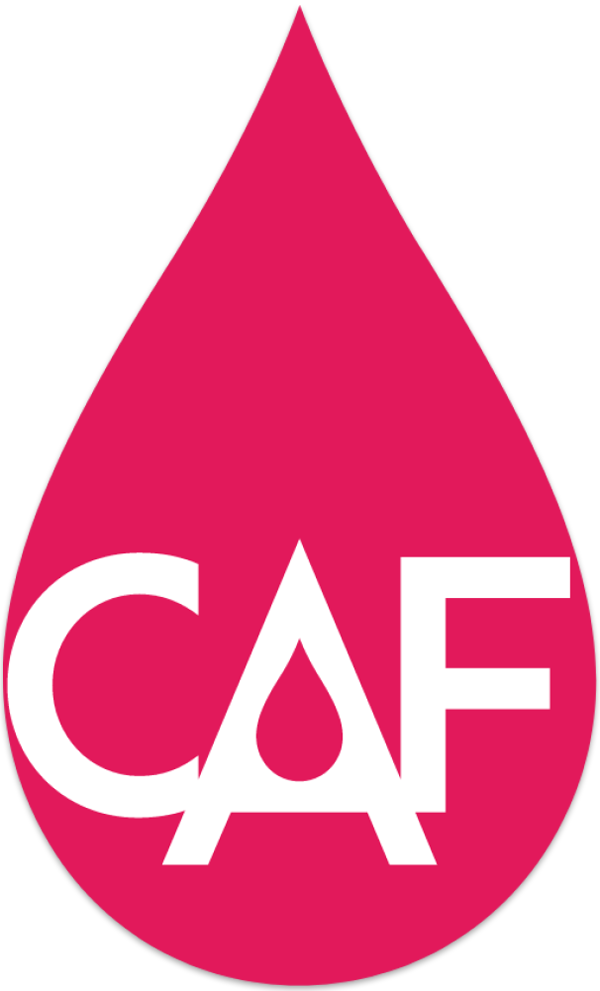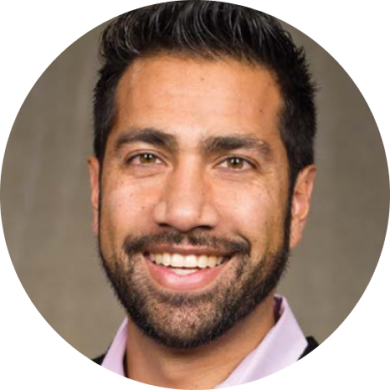Q&A with Dr. Tariq Ahmad
About Dr. Ahmad
Tariq Ahmad, M.D., F.A.A.P., is an expert in pediatric endocrinology, which includes hormone disorders involving the thyroid, pituitary, adrenal gland, and skeleton. He also manages problems with growth and pubertal development, as well as conditions related to diabetes.
Dr. Ahmad attended Cornell University for his undergraduate studies, New York Medical College for medical school, and completed his pediatric residency at the Children’s Hospital at Cleveland Clinic. He then went on to complete a pediatric endocrinology fellowship at the Children’s Hospital Los Angeles.
Dr. Ahmad joined the pediatric endocrinology division at UCSF Benioff Children’s Hospital Oakland in 2006. More recently, he has become more involved with their Northern California Comprehensive Thalassemia Center.
How often should growth be assessed in pediatric patients with thalassemia? Which particular measurements should be performed (standing height, sitting height, etc)?
Appropriate height velocity (the increase in height during a given period) is an important indicator that growth is adequate from a hormonal standpoint. Pediatricians typically have multiple visits with newborns to make sure they are growing at an appropriate rate.
Growth is very rapid in the first couple of years of life and then, by 5 years of age, slows down to approximately 5 centimeters (2 inches) per year until puberty starts – at which point, the peak height velocity can almost double.
In general, there are two important factors that influence final adult height:
- The time at which an individual enters puberty
- How quickly they progress through puberty
Most females enter puberty between 9 to 10 years of age, begin to menstruate around 12.5 years of age, and then stop growing around 15 years of age. Estrogen is a hormone that causes the closure of the growth plates, which is why girls stop growing sooner than boys.
About 25% of boys enter puberty by 10 years of age, while 50% of boys enter puberty by 11 years of age. Subsequently, boys will stop growing around 16 years of age.
An important concept, however, is that the bones may have a different age than the child.
A boy who is a “late bloomer,” for example, may have a bone age of 8 years even though he is 10 years of age. One might infer, then, that this boy might stop growing at age 18 years as opposed to age 16 years. This is why a bone age assessment (an X-ray of the left hand and wrist) can be very helpful in determining when puberty might begin and what the growth potential should be for an individual patient.
In transfusion-dependent thalassemia, initial height velocities and stature may be within normal percentiles based on patients’ genetic background. But after 8 years of age, patients’ stature may begin to fall behind relative to their peers – particularly since many patients do not experience a typical “growth spurt.”
Thus, between the ages of 10 to 12, the height disparity between a patient and his/her classmates becomes much more apparent. This height disparity may occur for multiple reasons – including low hemoglobin levels, poor nutrition, and hormonal deficiencies, just to name a few. Overall, many of those with transfusion-dependent thalassemia will end up shorter than their genetic potential. The earlier an intervention takes place, the more likely that these growth reductions can be avoided.
By assessing height every 3-6 months, interventions can take place if height velocity is unusually slow. Keep in mind that – aside from the typical stature and weight curves pediatricians use – height velocity curves can also be used for evaluation. If children are optimally transfused and chelated, particularly early in their life, the chances of growth problems are reduced.
In those patients who have non-transfusion-dependent thalassemia, growth reduction and hormone deficiency are much less common in childhood. When there is a problem with growth and/or pubertal onset, it is less often related to iron accumulation and more often due to poor nutrition or insufficient calories relative to what is needed for red blood cell formation. Once transfusions occur in this scenario, growth acceleration can be seen and the onset of puberty is restored.
Because of this, it is still very important to monitor height velocities, assess bone ages, and perform periodic hormone assessments in non-transfusion-dependent patients – particularly after 8 years of age.
Historically, deferoxamine (or Desferal) was the chelator most commonly used by thalassemia patients. Desferal affected growing bones, particularly in the spine. As a result, sitting height measurements took on greater importance.
With the evolution of alternative, oral chelating agents, there is now less need to monitor sitting height. From a practical standpoint, length (measured lying down using a flat firm board with a sliding block) is the metric used for patients less than 2 years of age, while standing height is used thereafter.
Sitting heights and arm spans may still be assessed, but are more difficult to measure accurately without the proper devices – and ultimately do not change the management for optimizing patient growth.
Should patients with all types of thalassemia be monitored for signs of growth impairment?
One potential consequence of iron overload is growth impairment. So, by and large, patients who are transfusion-dependent will need to be watched closely for growth impairment.
That said, there are many other reasons for poor growth, including being born small, poor nutrition, anemia, kidney problems, etc. As mentioned earlier, those who have non-transfusion-dependent thalassemia may still experience impaired growth if there is inadequate caloric intake relative to what is needed to support red blood cell formation.
Since anemia occurs in all forms of thalassemia, growth should still be monitored. Individuals with thalassemia trait, however, are not at risk for growth impairment.
What kinds of intervention are available to thalassemia patients with growth impairment?
When growth impairment is found, it’s important to identify any contributing factors that can be remedied, such as hormone deficiency, nutritional deficiency, kidney issues, low red blood cell counts, cardiac problems, or insufficient calories.
If a patient is still not growing sufficiently without any identifying cause – and is also below the 1.2 percentile in height (2.25 standard deviations below average for age and gender) – there are FDA-approved medications like recombinant Growth Hormone (rGH) therapy available for use.
What exactly does treatment with recombinant Growth Hormone (rGH) involve? Are there any side effects associated with Growth Hormone therapy?
Recombinant Growth Hormone (rGH) is a man-made version of human Growth Hormone that is injected into the fat layer just below the skin once per day with a very small, fine needle. This is a very well-tolerated medication, and side effects are uncommon.
Side effects that may occur are dose-related and typically stop once the medication is discontinued. Side effects may include: high blood sugar, increased fluid pressure in the head causing headaches or vision problems, back pain, hip pain, and disproportionate growth of jaw bones or limbs.
It is important to note that rGH does not cause scoliosis (curvature of the spine) but can accelerate any existing curvature in the spine. rGH also does not appear to be associated with any malignancies unless given to individuals who are at risk for cancer (i.e., patients with a history of a primary tumor, certain syndromes, etc.).
What percentage of patients with Growth Hormone (GH) deficiency actually respond to Growth Hormone therapy?
Almost all individuals with Growth Hormone deficiency will show a response to recombinant Growth Hormone within the first 6-12 months of treatment.
But it’s also important to note that rGH has a metabolic benefit as well – it increases lean muscle mass, improves energy and metabolism, improves lipid profiles (including cholesterol and triglyceride levels), increases bone density, and has been shown to help cognitive skills in adults with GH deficiency.
Do some patients require only a short course of Growth Hormone (rGH) therapy, or do most patients remain on Growth Hormone for the long-term? How do you determine whether a patient still needs Growth Hormone treatment?
If a patient responds to rGH, he/she will continue therapy until they have finished growing (height velocity < 2 centimeters [0.8 inches] per year, approximately), or until the bone age reaches 16 years in boys or 15 years in girls.
At this point, rGH therapy is stopped and allowed to wash out (which takes approximately 2 months). Once washout has occurred, Growth Hormone deficiency is reassessed through testing, which may include a Growth Hormone stimulation test to see if the patient’s pituitary releases Growth Hormone upon stimulation.
If a patient is still found to be Growth Hormone deficient, it is recommended to continue rGH treatment, but at adult rGH replacement doses (approximately 1/6 the dose of that taken when growing).
Is there an age cutoff for prescribing Growth Hormone to a thalassemia patient with growth impairment/Growth Hormone deficiency?
In a meta-analysis of individuals with short stature without thalassemia who were given rGH, significant height improvement was found in those who started treatment prior to the start of puberty.
That said, if one is GH deficient, it is recommended to start rGH regardless of age. Even an adult diagnosed with GH deficiency should start rGH treatment for its metabolic benefits.
Are there any patients with Growth Hormone deficiency and growth impairment for whom Growth Hormone therapy would not be recommended?
Those for whom rGH therapy is not recommended include patients with active tumors or with poor cardiac function.
rGH should also be used cautiously in patients with diabetes, as it can cause hyperglycemia (high blood sugar) secondary to insulin resistance.
Skin nevi (or moles) should be monitored for increased growth as well.
Are there any available interventions for patients who are not growing at a normal rate – but who do not have Growth Hormone deficiency?
As mentioned before, rGH has been FDA-approved for those who have idiopathic short stature, defined as less than the 1.2 percentile in height (2.25 standard deviations below average for age and gender).
rGH is also FDA-approved for those with poor growth associated with chronic renal disease. There are also non-FDA-approved medications that have been used in conjunction with rGH that have been shown to improve end adult height, including aromatase inhibitors and/or Gonadotropin Releasing Hormone (GnRH) agonists.
Aromatase inhibitors and GnRH agonists have not been shown to improve height when used without rGH, however.
Is there any evidence that thalassemic children adopted from developing countries show a greater degree of growth impairment than other thalassemia patients?
It is difficult to determine what the optimal height for an adopted child should be without the knowledge of his/her true birth date, birth weight, biological parents’ heights, or the average height from his/her region of origin.
That said, the team at UCSF Benioff Children’s Hospital Oakland is in the process of analyzing the growth patterns of patients who received early care in a developing country compared to those who received early comprehensive care in the United States.
We theorize that inadequate transfusions early in life, resulting in severe anemia – combined with malnutrition and emotional deprivation – are just some of the factors that may contribute to growth failure in children with thalassemia from developing countries. Later, the iron toxicity resulting from poor chelation may further add to these patients’ growth impairment, although it is unclear when iron toxicity starts to have a critical effect on growth.
Once transfusions begin to take place appropriately and chelation has been optimized – particularly in the context of adequate caloric intake and a loving and nurturing family – children with thalassemia adopted from developing countries may be able to achieve catch-up growth.
It is important to keep in mind that these children may actually experience such rapid catch-up growth that the bone age can accelerate and early puberty may even occur. Close monitoring of pubertal development and bone ages are therefore extremely important in children adopted from developing countries.

